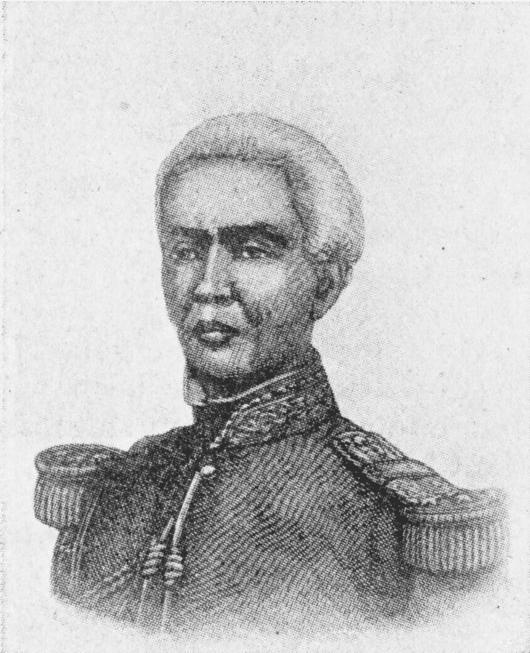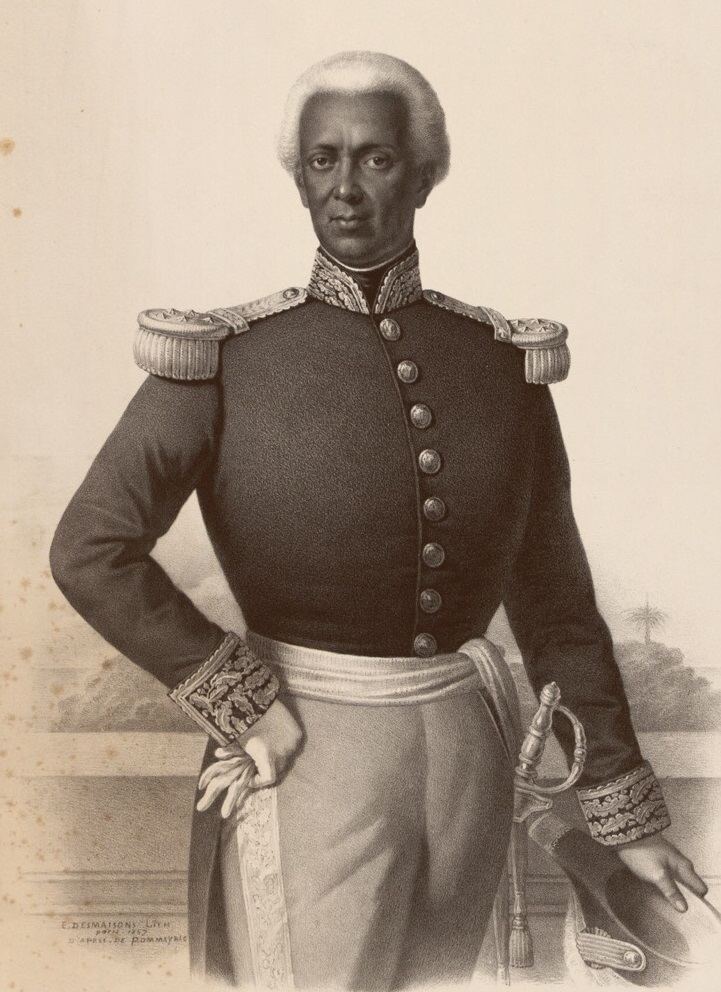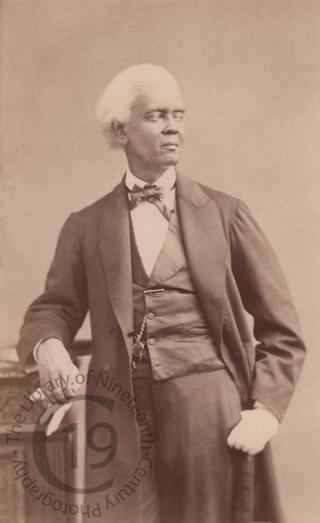Role Polit. Succeeded by Nissage Saget | Profession Military Resigned March 13, 1867 Name Fabre Geffrard | |
 | ||
Full Name Guillaume Fabre Nocolas Geffrard Born September 23, 1806Anse-a-Veau, Haiti ( 1806-09-23 ) Spouse(s) Marguerite Lorvana McIntosh Presidential term January 15, 1859 – March 13, 1867 | ||
Fabre geffrard president of haiti
Guillaume Fabre Nicolas Geffrard (September 19, 1806 – December 31, 1878) was a mulatto general in the Haitian army and President of Haiti from 1859 until his deposition in 1867. After collaborating in a coup to remove Faustin Soulouque from power in order to return Haiti back to the social and political control of the colored elite, Geffrard was made president in 1859. To placate the peasants he renewed the practice of selling state-owned lands and ended a schism with the Roman Catholic Church which then took on an important role in improving education. After surviving several rebellions, he was overthrown by Major Sylvain Salnave in 1867.
Contents

Presidency

His first act as president was to cut the army in half from 30,000 to 15,000. He also formed his own presidential guards called Les Tirailleurs de la Garde, who were trained under him personally. In June 1859, Geffrard founded the National Law School and reinstituted the Medical School that Boyer began. His ministers of Education, Jean Simon Elie-Dubois and François Elie-Dubois, modernized and established many lycea in Jacmel, Jérémie, Saint-Marc, and Gonaïves. On October 10, 1863, he reintroduced the colonial law that required roads to be built and maintained. He also revived the policy of former rulers Jean-Jacques Dessalines, Alexandre Pétion and Jean-Pierre Boyer of recruiting African Americans to settle in Haiti. In May 1861, a group of African Americans led by James Theodore Holly settled east of Croix-des-Bouquets. However, by 1862, Geffrard began to examine the constitution and eliminated the legislature to his own benefit. He first gave himself a raise, 2 plantations, and paid for his personal luxuries with hospital funds and army funds. In 1863, he reformed the monetary system to that of the present-day.

Geffrard was a Catholic, which made him renounce any form of the Voodoo faith. He gave orders to demolish altars, drums, and any other instruments used in ceremonies. In 1863, a six-year-old girl was killed by Voodoo practitioners in a gruesome fashion. Geffrard ordered a deep investigation and a public execution was held. This case became the famous Affaire de Bizoton, which was featured in a British minister's best-selling book.

In 1859, Geffrard made the first attempt in negotiating with the Dominican Republic under the regime of Pedro Santana. Unfortunately, in March 1861, Pedro gave his country back to Queen Isabella II of Spain, thus making Haitian officials nervous about having a European power back on their borders. In May of that year, guerilla war broke out in Santo Domingo against Spain. Geffrard sent his personal guards and men to help out the rebels against Spanish troops, but in July 1861, Spain gave Haiti an ultimatum for participating and supporting the Dominican rebels. In the end, Geffrard agreed to surrender to Spanish demands and dropped all intervention within Spanish territory in the east. This episode left many Haitians humiliated and angry at Geffrard because he backed down to a European nation while Faustin Soulouque would have never accepted it.
Geffrard, like many Haitians, supported the abolitionist movement in the United States and held a state funeral for the abolitionist John Brown, who was hanged for leading an armed insurrection against the United States government in 1859. With the secession of the slave-owning Southern states in the American Civil War, Haiti was granted diplomatic recognition by the United States. During the war, Spanish and British colonial officials in Cuba, the Bahamas and neighboring Santo Domingo openly sided with the Confederacy, harboring Confederate commerce-raiders and blockade-runners. By contrast, Haiti was the one part of the Caribbean (with the exception of Danish St. Thomas) where the United States Navy was welcome, and Cap-Haïtien served as the headquarters of its West Indian Squadron, which helped maintain the Union blockade in the Florida Straits. Haiti also took advantage of the war to become a major exporter of cotton to the United States, and Geffrard imported gins and technicians to increase production. However, the crops failed in 1865 and 1866, and by that point the United States was again exporting cotton.
Failed coups against Geffrard
By the eighth month of Geffrard's presidency, Faustin Soulouque's minister of interior, Guerrier Prophète, began to lay out his plan to overthrow Geffrard. Fortunately for Geffrard, his plan was picked up by Geffrard's guards and Prophète was exiled. In September 1859, Geffrard's daughter Madame Cora Manneville-Blanfort was assassinated by Timoleon Vanon. In 1861, General Legros tried to take over the weaponry storage but was detained by government forces. In 1862, Etienne Salomon tried to rally the rural community to revolt against Geffrard, but was instead shot and killed. In 1863, Aimé Legros gathered troops to overthrow Geffrard, but his troops betrayed him, and he was shot. In 1864, the elite community in Port-au-Prince tried to take over the weaponry storage, but the conspirators were later prosecuted and sentenced to jail. In 1867, Geffrard's bodyguards, Tirailleurs, betrayed him and tried to assassinate him inside the national palace.
Overthrow
In 1865, Major Sylvain Salnave began his takeover of the North and Artibonite part of Haiti. By May 15, both Geffrard and his government troops clashed with Salnave Northern troops. After using the Royal Navy for gunboat diplomacy with Salnave, the Geffrard regime was in ruins, especially financially. He re-opened old wounds between North, West, and South Haitians and brought foreigners into domestic affairs. In 1866, a huge fire engulfed hundreds of houses and businesses. In March 1867, Geffrard and his family disguised themselves and fled to Jamaica, where he died in Kingston in 1878.
